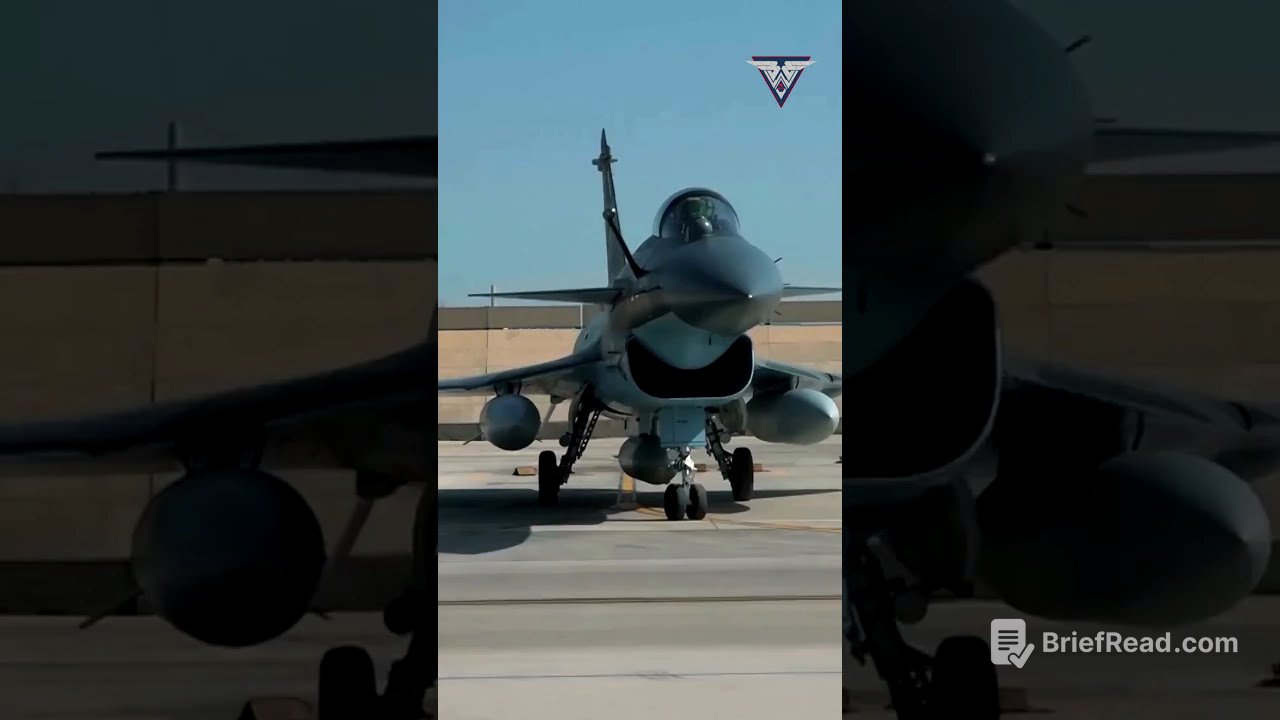TLDR;
This video compares China's J-10C "Vigorous Dragon" fighter jet with India's Rafale, focusing on their capabilities and how they measure up against each other. The J-10C boasts a powerful Chinese WS-10B engine, advanced radar, and long-range air-to-air missiles, while the Rafale excels in electronic warfare, sensor fusion, and multirole combat. The comparison highlights the strengths and weaknesses of each aircraft, particularly in terms of speed, range, radar capabilities, and weapon systems.
- J-10C has a longer range BVR (Beyond Visual Range) capability.
- Rafale excels in electronic warfare and sensor fusion.
- J-10C is more cost-efficient.
Introducing the J-10C Vigorous Dragon [0:04]
The J-10C, a 4.5 generation multi-role fighter, is introduced as the "Vigorous Dragon". It is powered by the Chinese WS-10B engine, enabling a top speed of Mach 2.2 and a combat range of 1,100 km. Its delta canard design enhances agility and takeoff performance.
J-10C's Radar and Weapon Systems [0:25]
The J-10C is equipped with a KJ-7A AESA radar capable of tracking 15 targets and engaging four simultaneously. Its primary weapon is the PL-15 air-to-air missile, which has a range exceeding 200 km, surpassing most Western missiles in beyond visual range (BVR) combat.
Rafale's Capabilities and Comparison [0:42]
India's Rafale also features an AESA radar with a range of 150 to 200 km. While the Rafale excels in electronic warfare, sensor fusion, and multi-role combat capabilities, the J-10C counters with a longer range BVR capability and is more cost-efficient.









